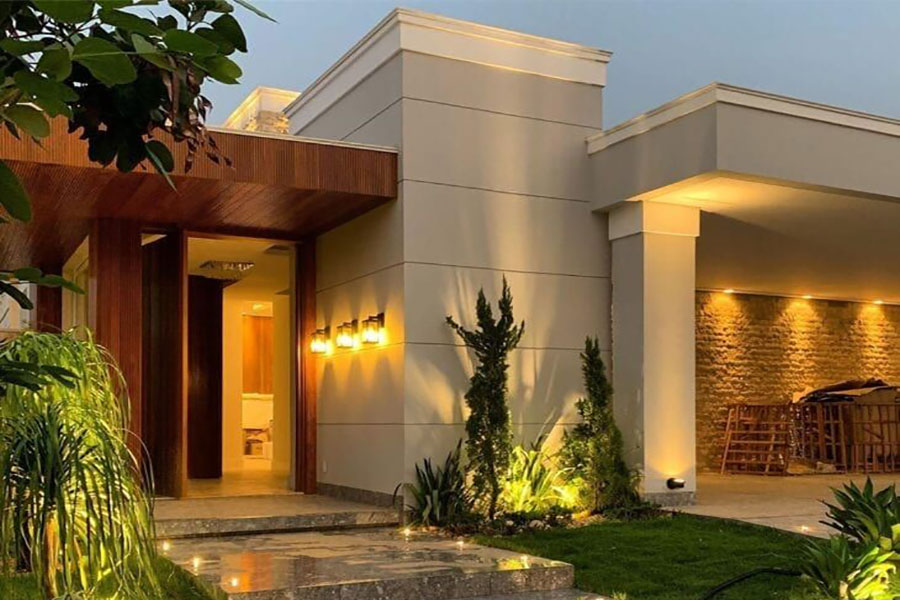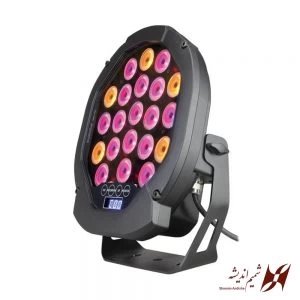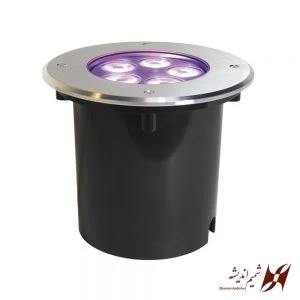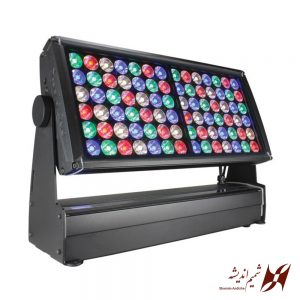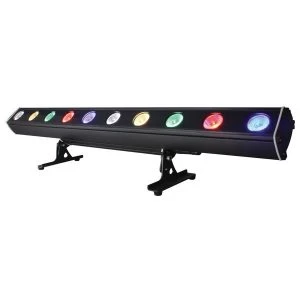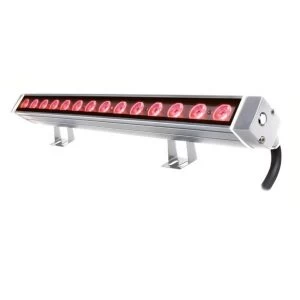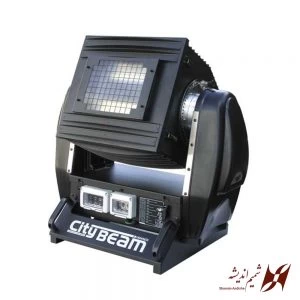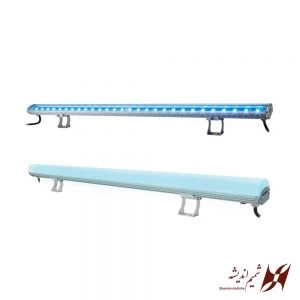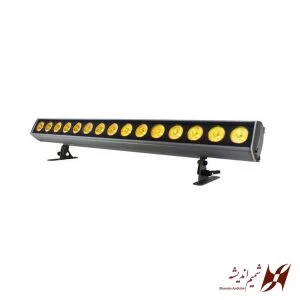Professional building lighting is a key factor in enhancing beauty, improving efficiency, and creating a unique visual appeal in architectural spaces. This process involves the intelligent use of techniques, tools, and lighting sources to provide not only adequate illumination but also to showcase visual aesthetics and architectural identity in the best possible way. Professional building lighting significantly impacts the visual attractiveness of structures, increases security, and reduces energy consumption.
A well-designed lighting plan can transform a simple building into a piece of art, evoking different emotions in the viewer. By leveraging scientific principles and artistic creativity, professional building lighting plays a crucial role in defining and enhancing the character of both interior and exterior spaces.
Types of facade lighting
Facade lighting, as one of the most important elements of building design, has a great impact on the beauty and attractiveness of the structure. This type of lighting is done in a variety of ways, each of which is selected based on the needs of the project and the type of architaecture. Below, we will introduce the types of facade lighting:
- Direct lighting
In this method, light is shined directly onto the surface of the facade to clearly display the architectural details of the building. This method is used to highlight specific architectural elements such as columns, window frames, and decorations. - Indirect lighting
In this type, light is projected onto various surfaces through reflection or diffusion instead of direct radiation. This method creates softer light and is often used to create a sense of peace and integrated beauty in the facade. - Linear lighting
Using linear lights along the edges, corners, or horizontal and vertical lines of the facade gives the building a modern and orderly appearance. This method is very popular for modern and minimalist designs. - Spot lighting
This technique uses small projectors or spot lights to emphasize specific parts of the facade, such as logos, inscriptions, or artwork. - Silhouette lighting
This technique involves placing a light source behind architectural elements, so that their shadows are cast on the surface behind them. This method is suitable for highlighting the overall shape of the building or specific elements. - Colored lighting
The use of colored lights can create a striking and different effect. This method is used for commercial, cultural buildings or buildings with special occasions. - Dynamic lighting
This type of lighting gives an attractive and moving effect to the facade by using lights that change color or intensity. This technique is often used in urban spaces and iconic buildings. - Flood lighting
In this method, the entire facade of the building is illuminated using large and powerful projectors. This type of lighting is very useful for historical buildings and large buildings.
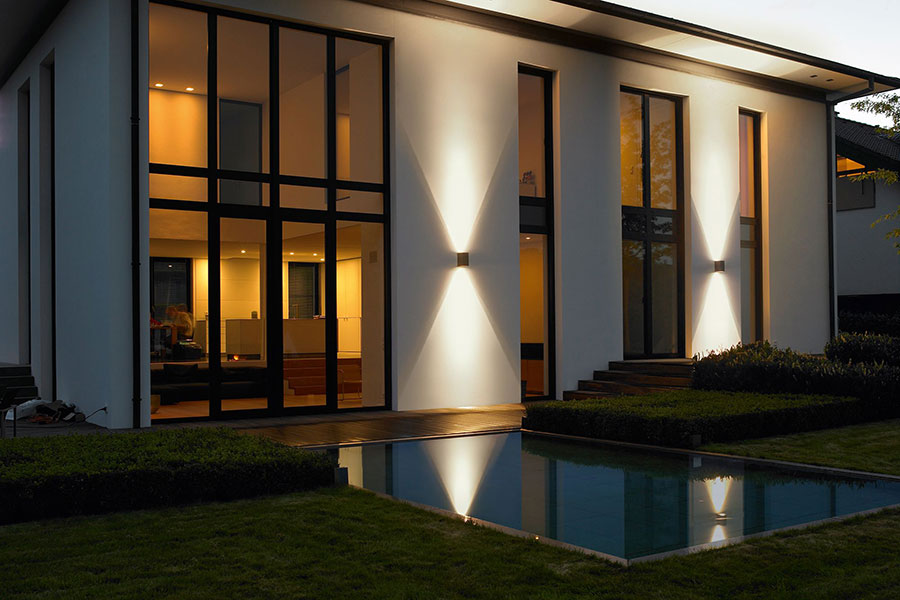
Modern Building Facade Lighting Methods
Modern building facade lighting techniques, using advanced equipment and technologies, help improve the beauty and performance of the building facade at night. Here are some modern building facade lighting methods and techniques:
1. Linear lighting
This method uses linear lights such as wall washers and LED strips to distribute light evenly on the facade surface.
Creating continuous and uniform lighting, highlighting the lines and boundaries of the facade.
2. Accent lighting
With this method, you can emphasize and give more effect to specific parts of the building facade such as columns, windows and protrusions.
Emphasizing important and attractive architectural aspects of the building facade.
3. Smart lighting
Using smart equipment such as smart LED lights and remote control systems to automatically adjust lighting based on environmental conditions.
Energy saving, the ability to adjust the color and intensity of the light as desired and create special lighting effects.
4. Lighting with projectors
Using LED projectors to illuminate large and prominent parts of the facade, such as entrances and wide walls.
Creating strong and focused lighting, suitable for wide lighting and highlighting specific areas.
5. Lighting with fiber optics
Using optical fibers to create beautiful and unique lighting effects on the facade.
High flexibility, creating precise lighting and special visual effects.
6. Colored lighting
Using RGB lights to change the color of the light and create colorful and dynamic lighting effects.
The ability to adjust and change the color of the light based on special occasions and events, creating attractive and diverse lighting effects.
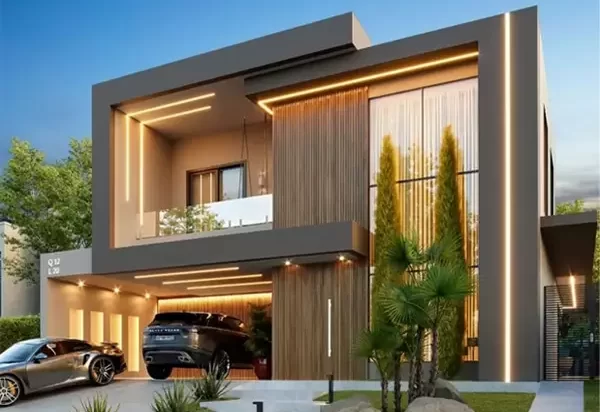
Stages of Lighting at Shamim Andishe
Professional lighting is a multi-stage process that requires careful planning and principled execution. At Shamim Andishe, this process is carried out in a completely specialized manner and in compliance with current world standards. The main stages of lighting at Shamim Andishe include the following:
1. Review of project needs and goals
In the first stage, Shamim Andishe’s design team holds meetings with the client and determines the project goals, type of building, its use, and expectations from lighting. This stage also includes a site visit and an examination of architectural features.
2. Lighting conceptual design
After collecting information, initial lighting ideas and concepts are developed based on the architectural style, visual identity of the building, and project needs. At this stage, initial suggestions are made including the type of lights, techniques, and suggested tools.
3. Simulation and Detailed Design
The Shamim Andisheh team reconstructs the initial designs in 3D using specialized lighting simulation software. These simulations allow the client to see the exact lighting view and make the necessary changes before implementation.
4. Selection of equipment and light sources
Based on the approved design, the best lighting equipment, including lights, projectors, control systems, and appropriate cabling, is selected. Shamim Andisheh ensures the efficiency and durability of the project by using high-quality and cost-effective products.
5. Installation and implementation of lighting
The Shamim Andisheh executive team installs the equipment and carefully adjusts the lighting systems, strictly observing safety and technical standards. At this stage, all connections, light angles, and lighting intensity are tested.
6. Final Inspection and Project Handover
After installation is complete, the overall performance of the lighting system is evaluated and any potential issues are addressed. After final approval, the project is handed over to the client.
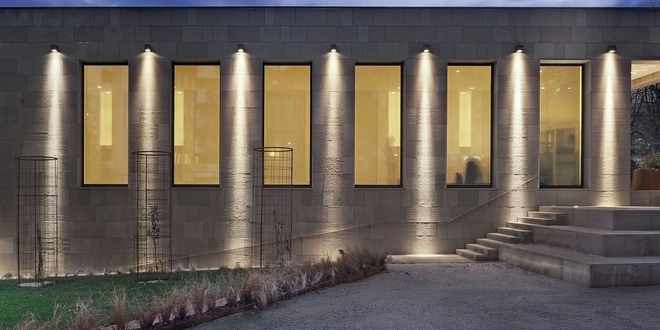
Types of lighting equipment from Shamim Andisheh Company

 English
English العربية
العربية